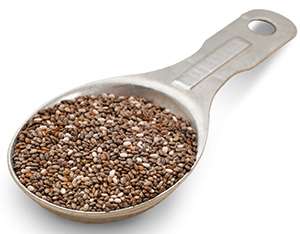Riding a food fad to an opportunity

Until a couple years ago, Shaun Paul's knowledge of chia was limited to the kitschy terracotta Chia Pet figurines. But recently, chia seeds, promoted as a nutritional powerhouse, have earned a growing consumer following and a prominent place on the shelves of health food stores. Demand is so high, in fact, that Paul, a research fellow with Tufts' Global Development and Environment Institute, wondered if organic farmers in developing countries could use the chia craze as a way to bolster their livelihoods.
It would be an ironic return for an ancient crop. Chia originated in Mexico and Guatemala some 3,500 years ago, when the seeds were a staple food of the Mayans and Aztecs. The Spanish conquistadors, in attempting to squash the local culture, banned the indigenous peoples from eating it.
Today chia is still grown in Guatemala, but mostly as an afterthought. "The old-codger farmers throw some chia seed off next to their corn where the corn isn't growing," Paul says.
Elsewhere, farmers who treat it as a business have been well rewarded. Chia grows optimally within 15 degrees of the equator, and Paul reports that farmers in Mexico, Peru, Paraguay, Argentina and Australia have reaped annual returns of 150 to 350 percent on their investments.
Chia's fans describe it as a nutrient-packed "superfood," with some companies touting its health benefits as just short of magic. Marketing hype aside, chia does count as nutrient dense. Two tablespoons have about 10 grams of fiber, along with protein, iron, calcium, magnesium and zinc. It is also an excellent source of the omega-3 fatty acid ALA.
Because chia consumers tend to support sustainable agricultural practices, Paul traveled around Guatemala speaking with members of farmer cooperatives that are already organic certified. Across the board, he found they were interested in diversifying their crops with something such as chia. "Many of these places are dependent on coffee, and there is a coffee blight running through the Americas," he says. "Some of these co-ops have lost 90 percent of their organic coffee crops."
The chia market is no small potatoes. Chia seeds are showing up as ingredients in everything from cherry lime drinks and chocolate peanut butter bars to gummy vitamins. One company that makes chia products, Nutiva, told Paul that it would be willing to place orders for up to 1,500 metric tons, enough to provide income to some 2,000 small farmers.
But is it a fad, or is it sustainable? Paul sees chia's popularity as indicative of two larger trends among consumers: a desire to eat foods that are naturally healthy and a preference for brands that benefit not only themselves, but other people and the planet. Paul doesn't see those trends ending anytime soon.
Provided by Tufts University

















